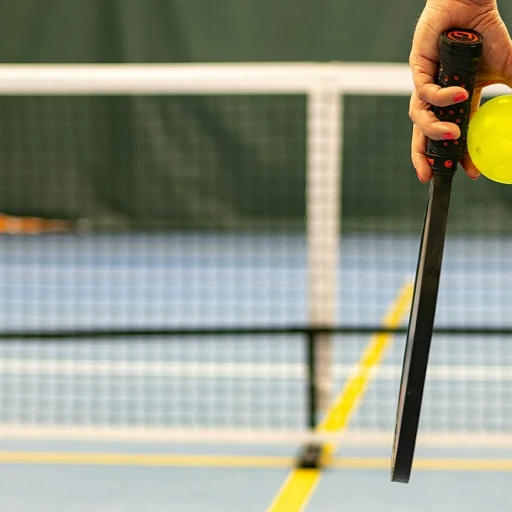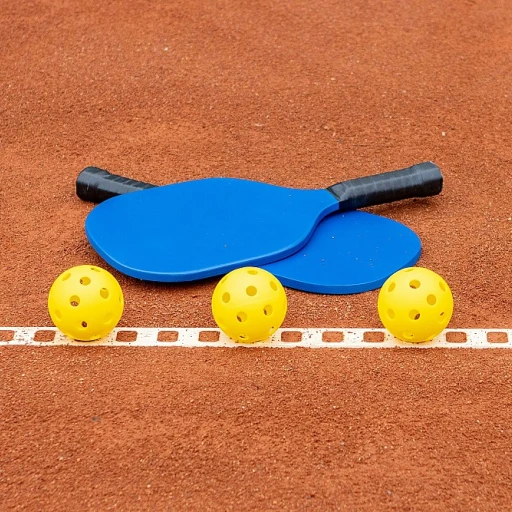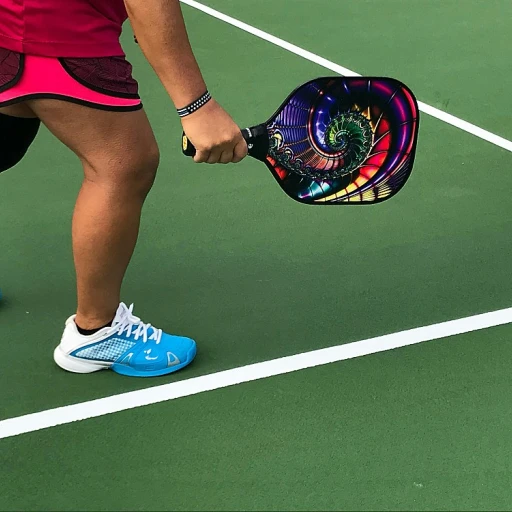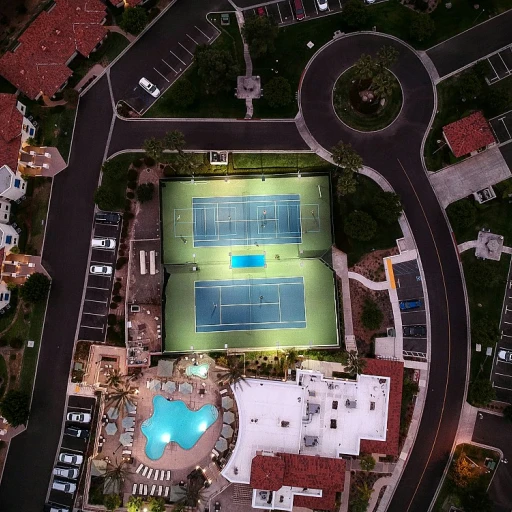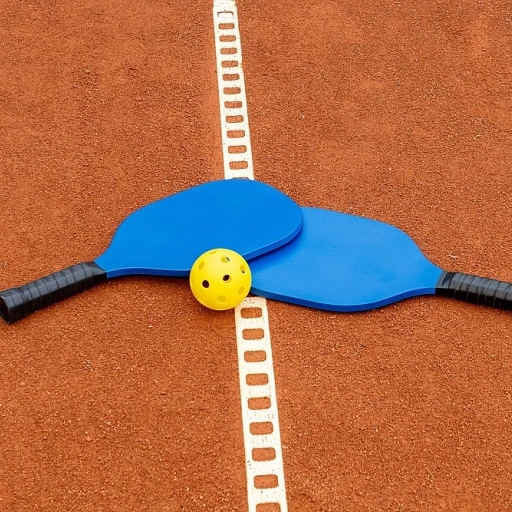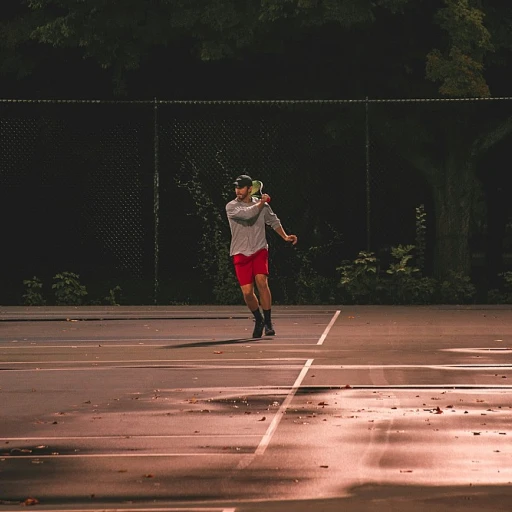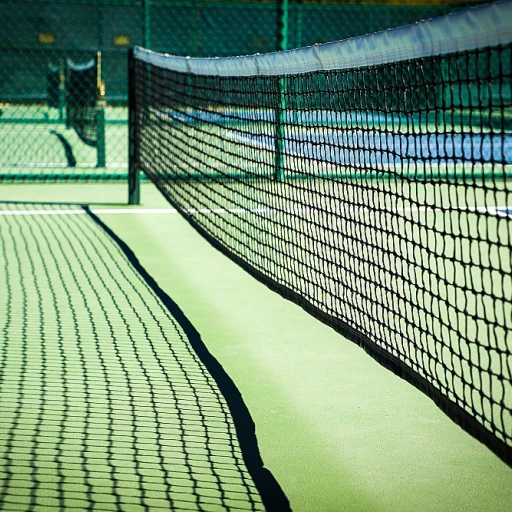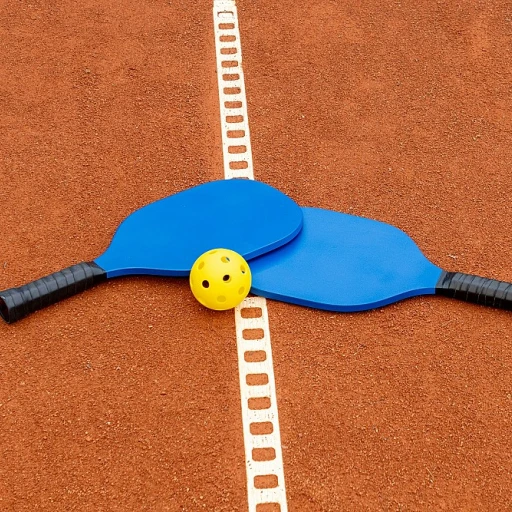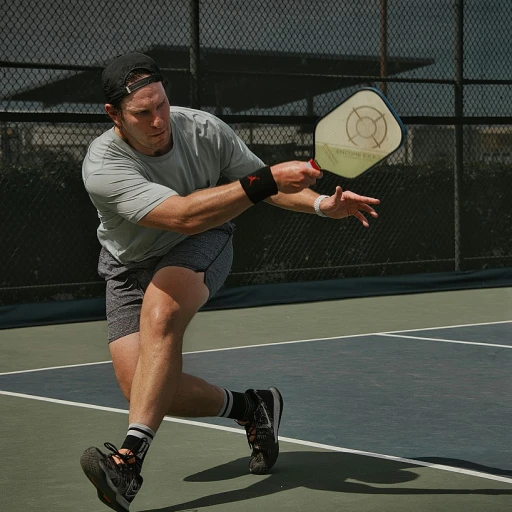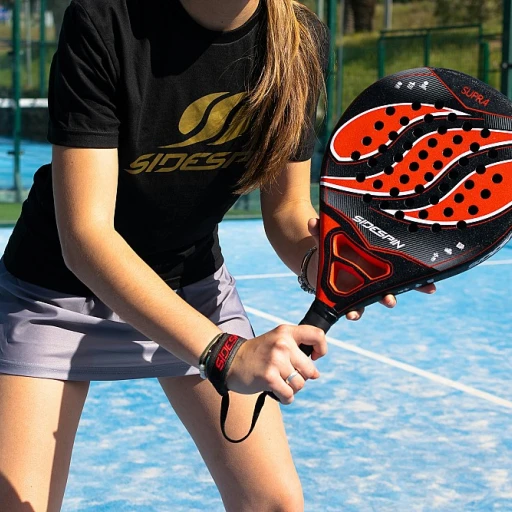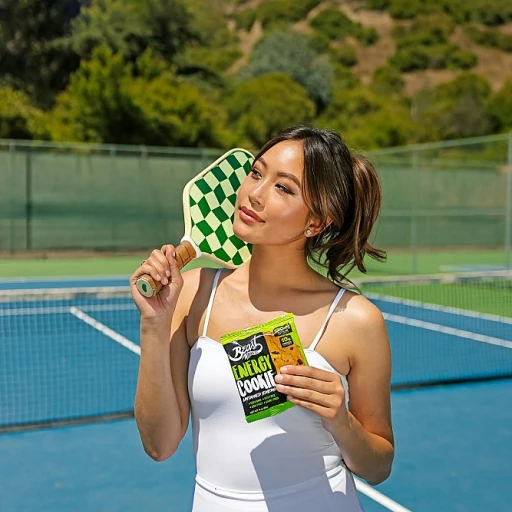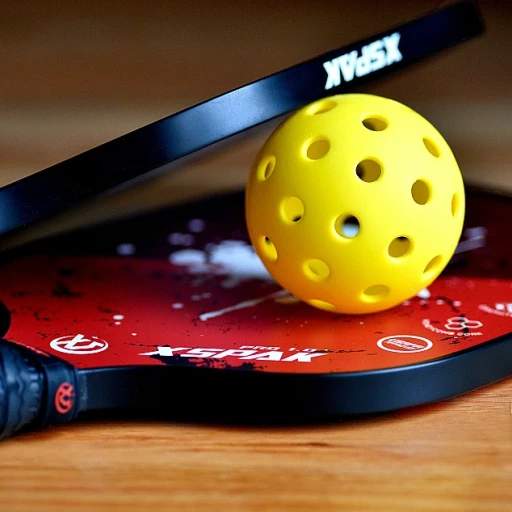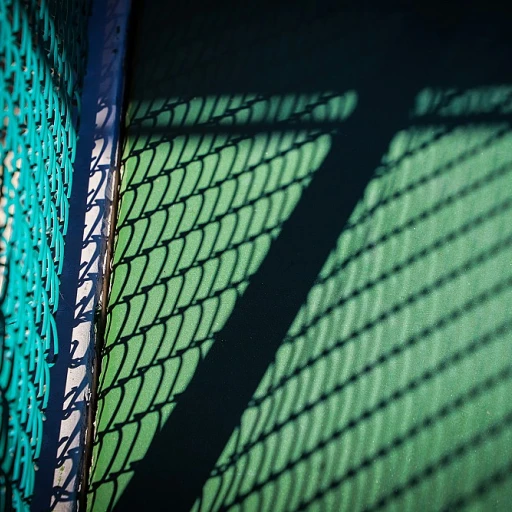
Understanding the Basics of Pickleball and Tennis
Unpacking the Fundamentals: Rules and Equipment
Understanding pickleball and tennis starts with a deep dive into their fundamental rules and equipment. Though they share core elements of racquet sports, each offers a unique approach to the game, with variations in their rules, court dimensions, and the equipment used.
The Essentials: Equipment and Rules
In pickleball, players use paddles—a departure from the traditional tennis racquet. These paddles are solid, typically smaller than tennis racquets, and allow for greater control over the ball, which differs distinctly as well; a lightweight, perforated ball resembling a wiffle ball is utilized. Notably, rules such as the “non-volley zone,” or kitchen, dictate play style, restricting volleys close to the net, which adds a strategic layer unique to pickleball.
Conversely, tennis employs a larger court, challenging athletes with its standard tennis ball and racquet dynamics. Tennis courts require a broader space, approximately 78 feet long and 27 feet wide for singles play, compared to a pickleball court’s smaller dimensions of 44 by 20 feet. This smaller court size often results in an environment that some might find more accessible, especially for beginners or those seeking a less physically demanding sport.
Defining the Playing Field
The sport layouts significantly impact gameplay and accessibility. Pickleball courts are often derived from tennis courts by dividing them into smaller sections, making it easier for facilities to offer both sports. The smaller court size commonly translates to reduced running and less intensive physical demands, allowing for a game pace that is engaging yet manageable.
For those interested in deeper insights into equipment differences, check out the comparison between wiffle ball and pickleball for a detailed exploration.
Physical Demands: Pickleball vs. Tennis
Physical exertion comparison between pickleball and tennis
Pickleball and tennis demand different levels of physical exertion from their players. Tennis is renowned for its rigorous requirements, with a typical match often demanding speed, agility, and endurance. This sport involves running across a larger court, requiring players to cover more ground and execute powerful serves and volleys. Conversely, pickleball offers a less physically taxing alternative for those seeking an engaging athletic activity.
The smaller court size in pickleball leads to a game that is perceived as easier than its tennis counterpart. Unlike tennis, which requires players to dash around a court over 70 feet long, pickleball keeps the action contained within a 44 feet long by 20 feet wide court. This allows players, particularly older adults and beginners, to enjoy longer rallies without the same level of exhaustion.
Furthermore, the equipment for each sport plays a role in the physical demands. In tennis, players wield rackets strung tightly to accommodate powerful hits. In pickleball, players use lighter pickleball paddles, which allow more precise control and less strain on the arms and shoulders. This lowers the barrier to entry for new players who may find the transition from casual play to more competitive levels of the sport easier.
Another key point to consider is the scoring system and pace of play. The rules of pickleball encourage shorter points and resetting between serves, giving players frequent opportunities to catch their breath. This aspect of the game contributes to its relaxed rhythm, further differentiating it from the high intensity typically associated with tennis.
For those comparing sports with an eye for accessibility, pickleball displays a forgiving nature regarding physical demands, making it a suitable alternative for individuals of various ages and skill levels. For more in-depth comparisons of related sports, you can refer to this in-depth analysis for enthusiasts and newcomers.
Learning Curve: How Quickly Can You Pick Up Each Sport?
Grasping the Distinct Learning Curve
When it comes to the learning curve for pickleball and tennis, there are notable differences that influence how quickly players can pick up each sport. Pickleball is often perceived as more accessible to beginners, mainly because of the simpler rules and the smaller court size. These factors significantly contribute to making pickleball easier to learn than tennis. In tennis, the larger court and different techniques required for serving and rallying can create a steep learning curve for new tennis players. The game requires a good understanding of spin, pace, and ball placement techniques, which can take time for beginners to master. In contrast, pickleball eliminates some of these complexities due to the smaller court and slower game pace, allowing players to enjoy rallies without overwhelming difficulty. The equipment used in pickleball also contributes to its accessibility. Pickleball paddles are lightweight and easier to maneuver compared to tennis rackets. This encourages quicker adaptation to playing styles, making it simple for new players to focus on learning the basics of the game. Additionally, the scoring system of pickleball is straightforward and easier to grasp for beginners. Players are required to win points through precise placement and strategy rather than power, allowing players of all skill levels to engage without feeling daunted. Overall, these factors make pickleball more user-friendly for newcomers and can lead to faster engagement with the sport, promoting a welcoming environment for players of all backgrounds and skill levels.Court Size and Game Pace: Impact on Playability
Court Dimensions and Game Tempo
The size of the playing area significantly impacts the accessibility and playfulness of a sport. In pickleball, the court is notably smaller than a tennis court, measuring just 20 feet wide by 44 feet long for both singles and doubles games. This smaller court size can make pickleball more accessible and less intimidating for players, especially beginners, compared to the larger, more expansive tennis court. With the court being smaller, the game pace in pickleball also differs. The reduced court dimensions allow for quicker games with less strenuous movement, which can be easier on the body, especially as one ages. This makes pickleball a sport that's easier than tennis for those at various skill levels and physical conditions, offering a form of play that is inclusive to all ages.Impact of Court Size on Player Engagement
A smaller court size contributes to a more socially engaging experience as players are in closer proximity during the game. This closeness fosters communication and interaction, further adding to the appeal of pickleball as a communal sport. Pickleball players often experience a heightened level of engagement during play, which can attract individuals looking for both competitive play and social interaction. On the other hand, the larger tennis court demands broader range and more exhaustive play, which can be quite appealing to those who thrive on longer rallies and a faster-paced game. Tennis players may find the spaciousness of the tennis court challenging but rewarding as it can offer a more intense cardio workout. Both sports have rules that dictate how the games are played, but the role of court size and game tempo is a defining aspect that differentiates them, influencing both the style of play and player preference.Equipment and Cost Considerations
Gear and Financial Factors in Pickleball and Tennis
Evaluating the equipment and costs involved in pickleball and tennis is essential, particularly when considering accessibility and ease of entry into these sports. Whether you're a seasoned player or a novice entering the world of racket sports, understanding these aspects can enhance your experience.- Equipment Needs: Pickleball requires a paddle, a ball, and a court that is significantly smaller than a tennis court. The paddles are typically more affordable compared to tennis rackets, making this sport more accessible for beginners. Tennis involves rackets, balls, and a larger court.
- Court Costs and Availability: Tennis courts tend to be larger and can sometimes require higher maintenance. In contrast, pickleball, with its smaller court size, often fits into unused spaces or can share existing tennis courts (with some adaptations), making it a convenient option for many community centers and parks.
- Cost of Participation: The initial investment for playing pickleball is generally less than for tennis due to the smaller and less expensive equipment. Picking up a pickleball paddle and the necessary gear is often simpler and cheaper, which can appeal to those dabbling in a new sport.
Community and Social Aspects of Pickleball and Tennis
Building Communities Around the Game
One of the appealing aspects of pickleball is its strong sense of community that creates an inviting environment for players of all ages and skill levels. Given the smaller court size and slower game pace, pickleball tends to foster social interaction more easily than the more fast-paced tennis matches. This interaction often translates into a vibrant community where players are encouraged to learn from each other and improve together.
While tennis clubs have long been established as hubs for social interaction, pickleball courts are quickly becoming centers of community activity. Many people find pickleball easier than tennis to pick up and play due to its simpler rules and smaller court, encouraging players who might have been intimidated by tennis to join in.
Pickleball's inclusivity is enhanced by its adaptable playing style and lower physical demands compared to tennis, making it an attractive option for those looking to engage in a less strenuous, yet equally competitive and enjoyable, sport. This is especially true for older adults who appreciate the game’s less demanding nature and opportunity to remain active while forming friendships.
The casual and often spontaneous nature of pickleball play also contributes to community spirit. Players can easily drop in for a game with a paddle in hand, enjoy a few rounds, and socialise with fellow enthusiasts across different skill levels. This open approach to engagement can lessen the learning curve often associated with starting new sports like tennis.
In addition, many communities have adopted pickleball to capitalize on unused tennis courts, transforming them into spaces for younger family members and skilled veteran players to engage in a sport that bridges generational divides.


